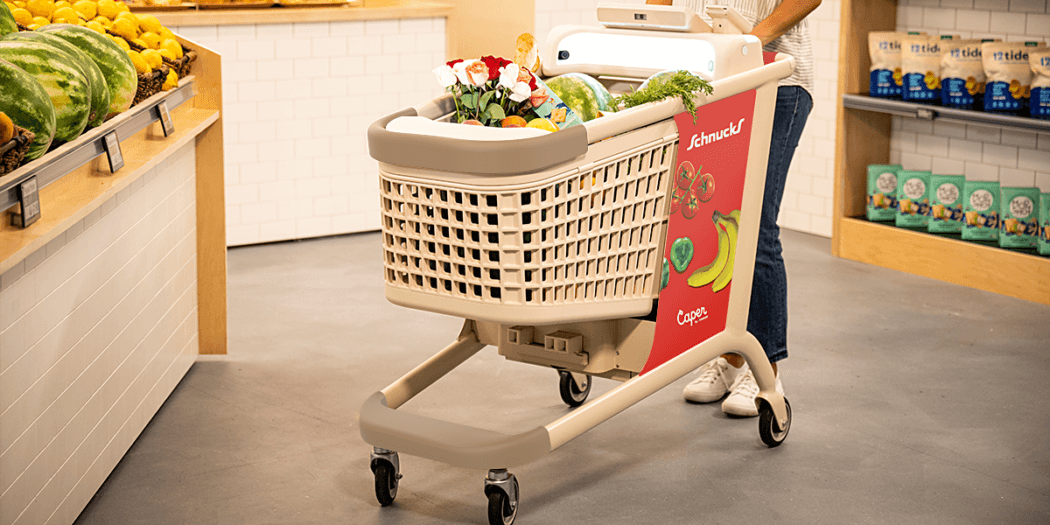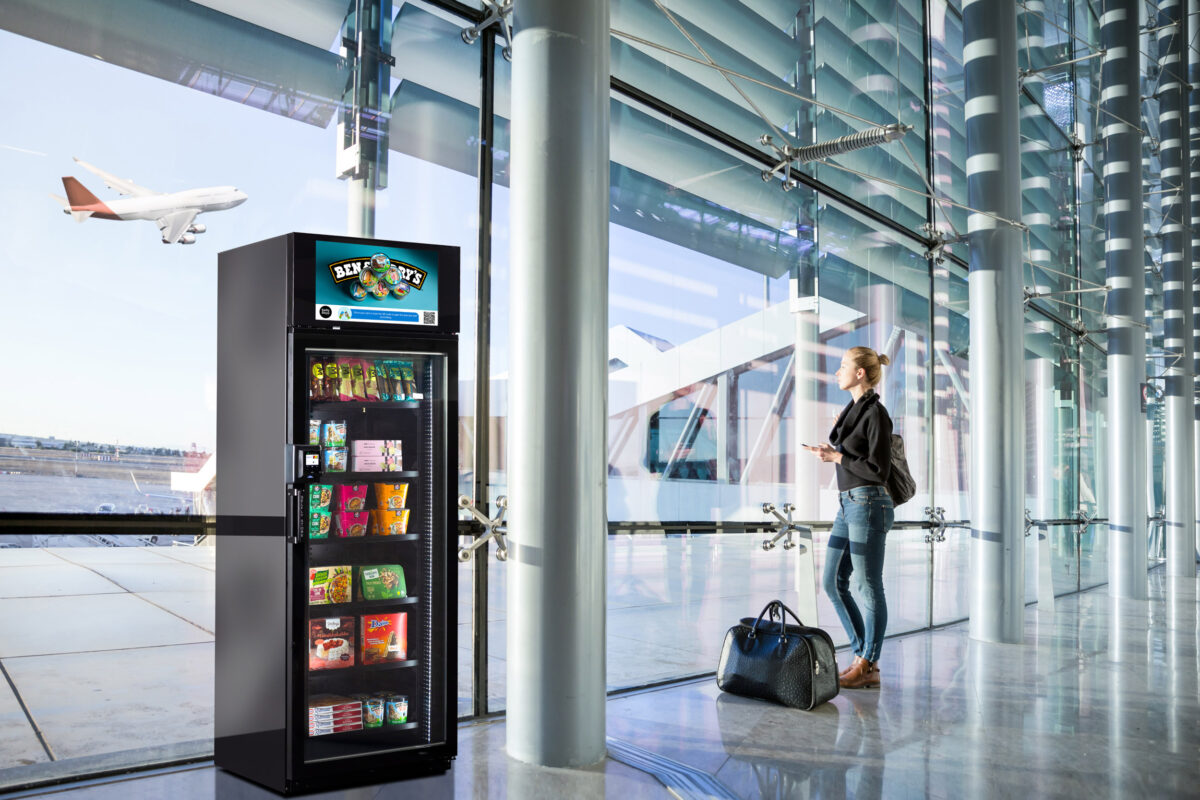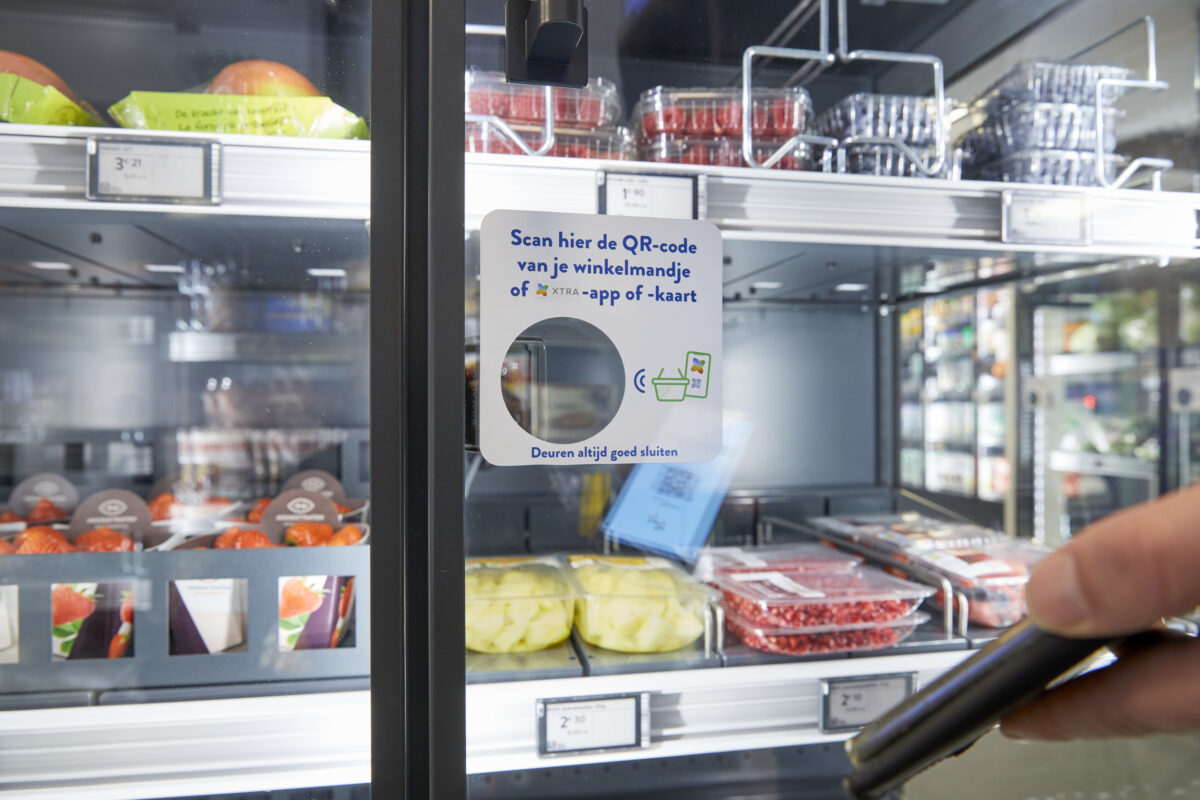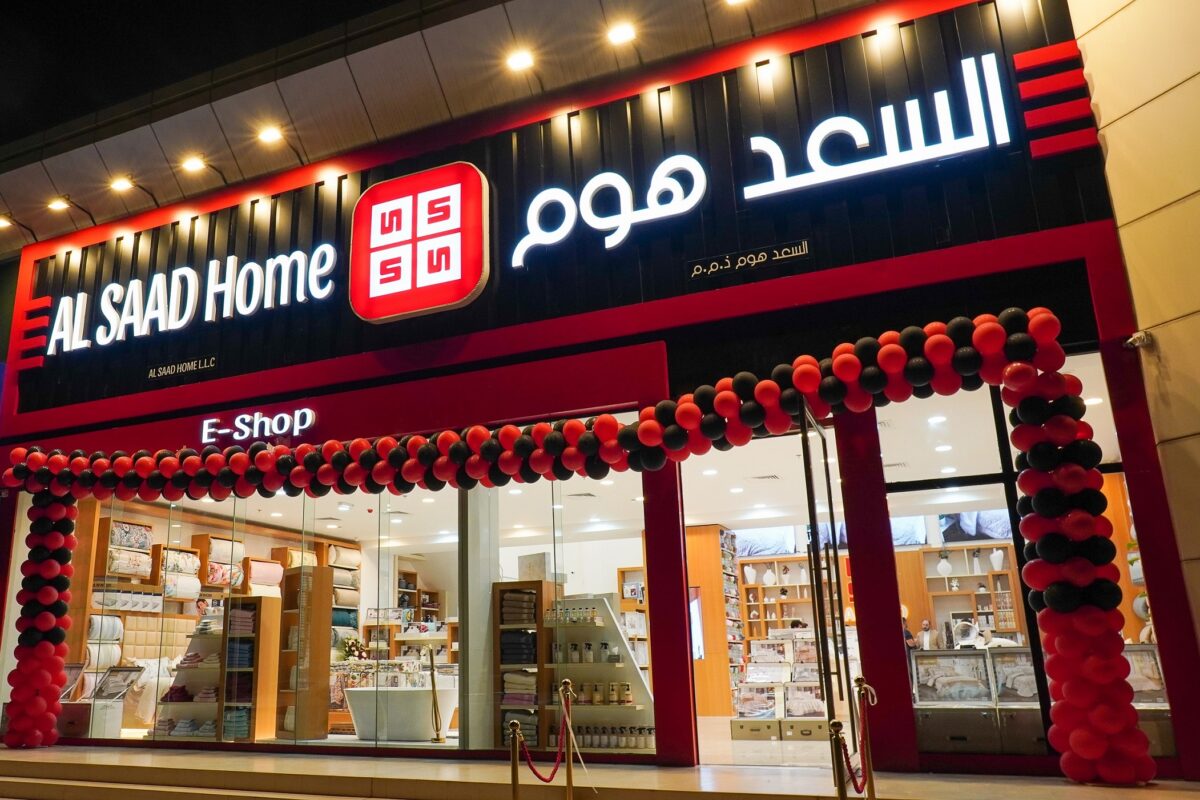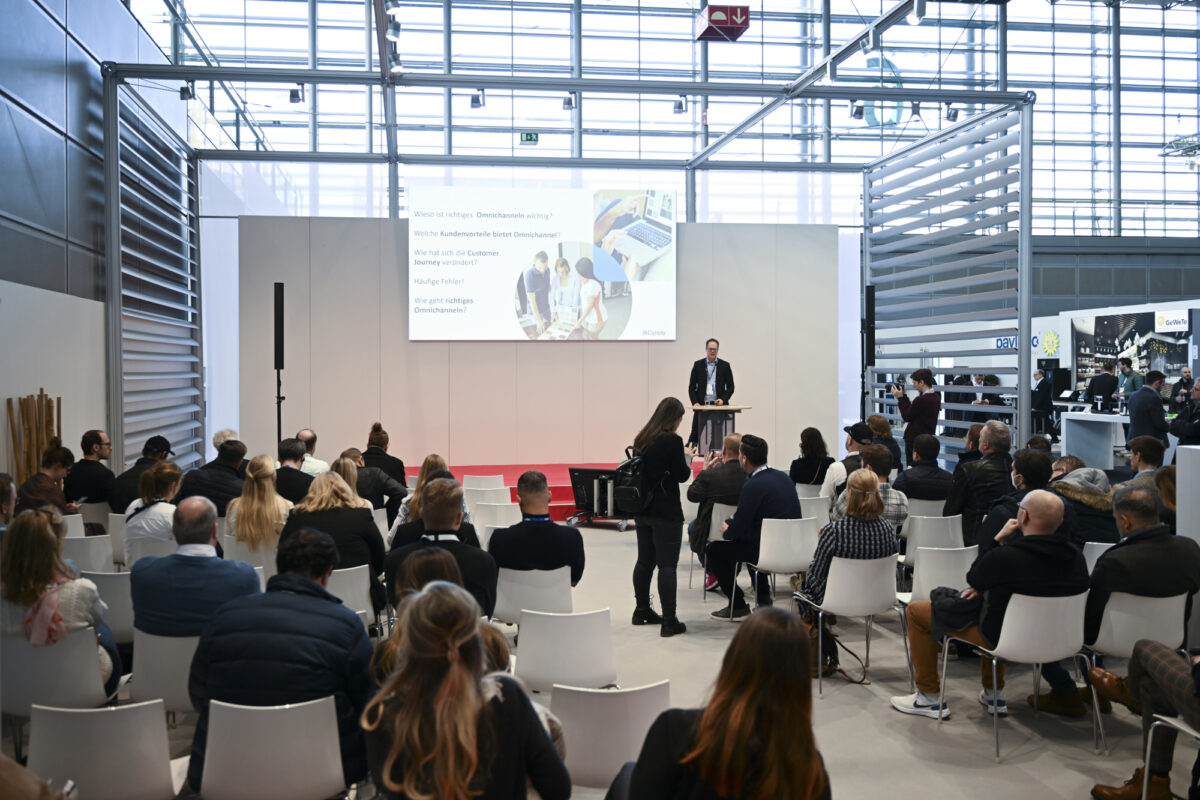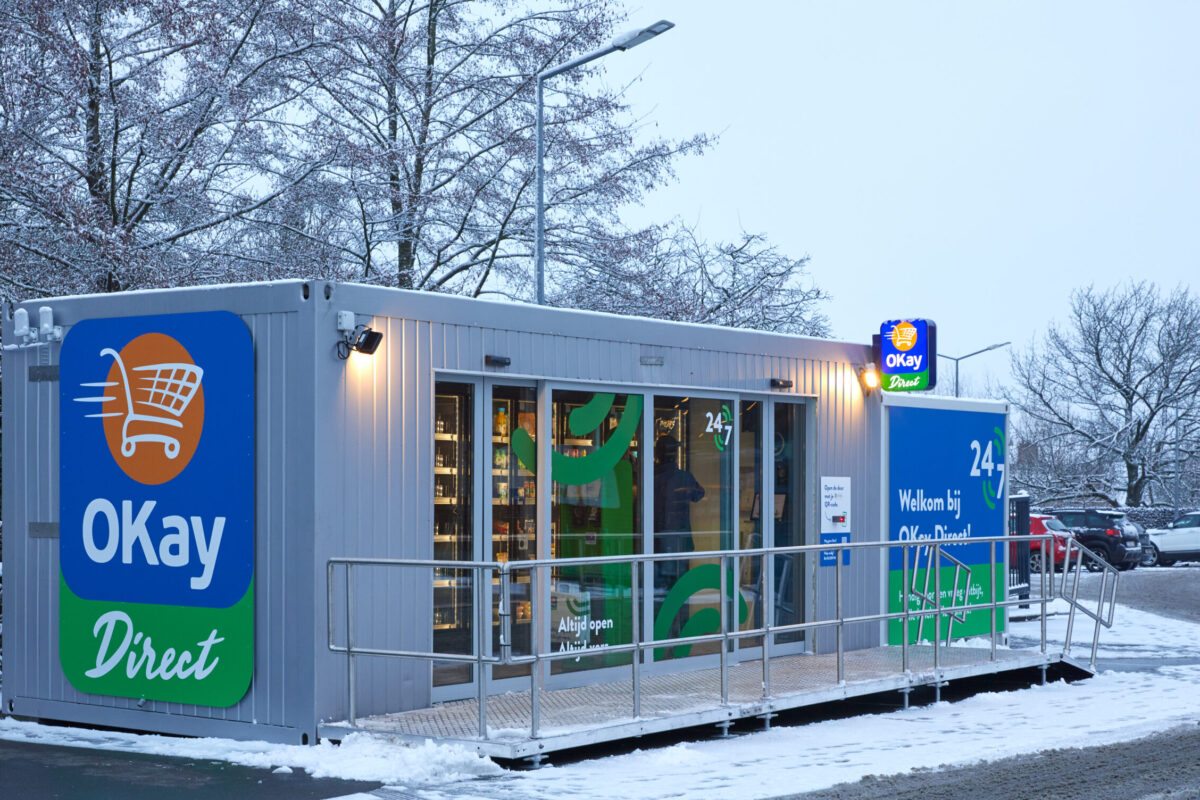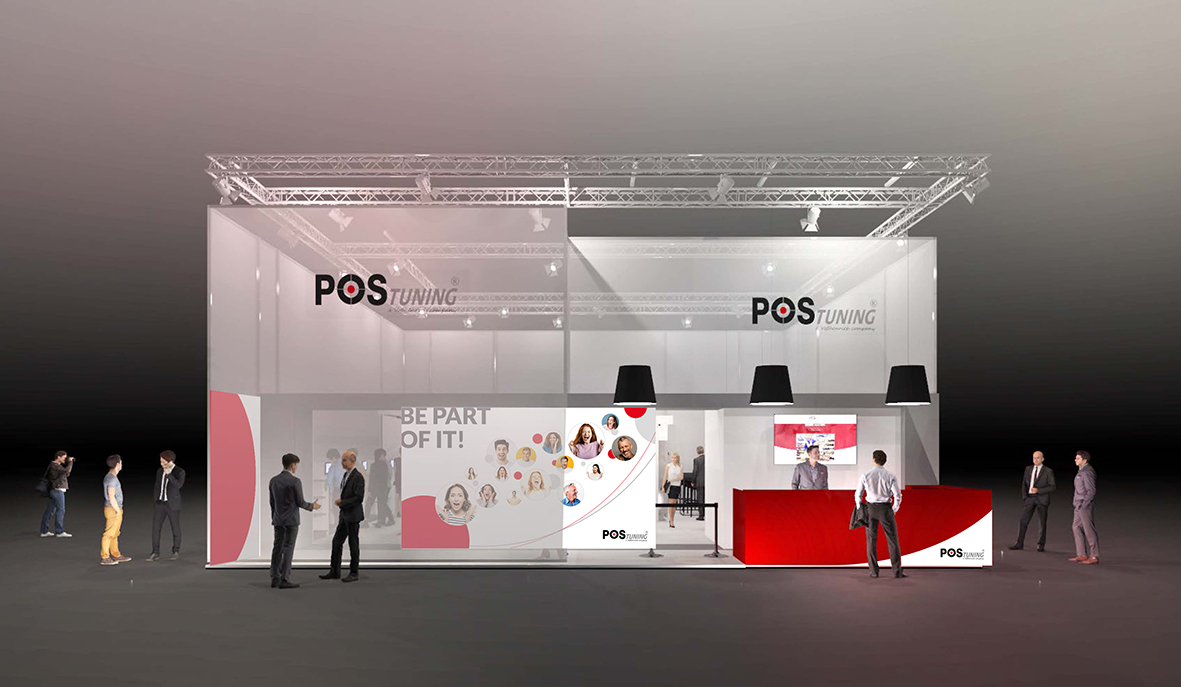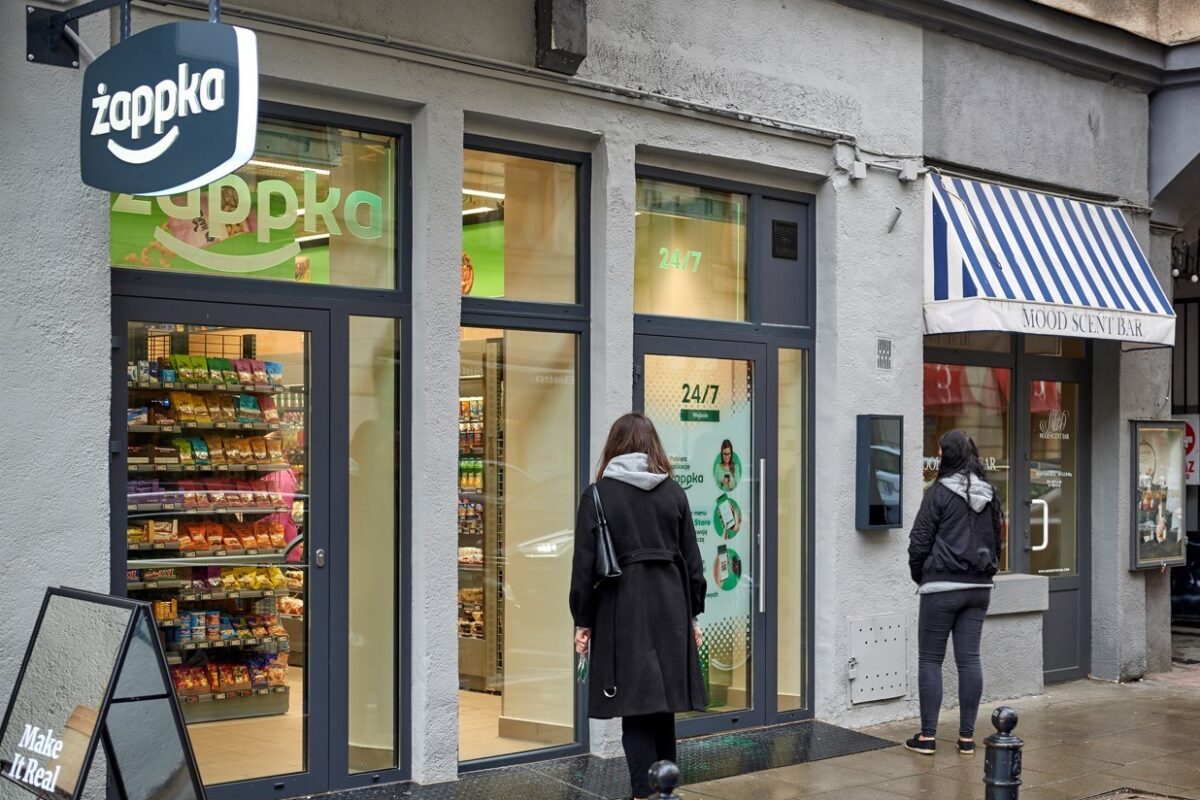Interview with Andreas Starzmann, Director Digital Office at Wanzl
There are countless retail data collection technologies on the market. The challenge for the retail industry is to connect them all. The collected data then enables retailers to draw the right conclusions and plan their next steps.
At the EuroCIS trade fair, Wanzl introduced a retail assistance system designed to optimize processes. Mr. Starzmann, what is the added benefit of a connected assistance system?
On average, today‘s well-equipped grocery store features 13 different IT systems. It’s impossible for one person to handle all that. That’s why important aspects such as signals from the reverse vending machine, frozen food and power outages must be specifically collected and communicated to the respective employees. The assistance system can be used for these purposes and consolidate the data.
That means staff members can see these signals on a smartwatch?
On a smartwatch or a tablet. They indicate whether shopping carts need to be restocked for example. I can also see whether I should open another checkout in ten minutes. The system anticipates potential checkout queues by measuring the average waiting times depending on the time of day and customer flow and based on the used shopping baskets and carts. The recommendation engine then suggests the next important task.
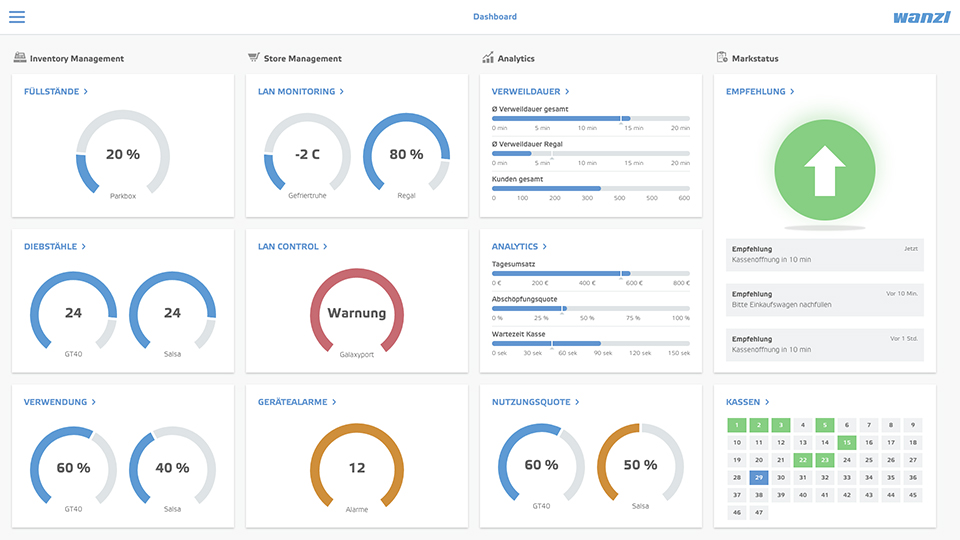
© Wanzl Metallwarenfabrik GmbH
How do you generate the data for this information?
RFID plays a big role in all this. The tags that are attached to the shopping carts and baskets assist with inventory management. In-store RFID readers enable retailers to see where and how many carts are in use. We also measure the dwell times from the time customers enter the store until they leave it again. If someone quickly tries to move a shopping cart past the checkout, he/she most likely did not pay for the items. This triggers a security camera that records any events 20 seconds before and after the incident. The security officers can be notified via a smartwatch to view the video footage.
The system also issues warnings in other areas.
That’s right. Our IoT shelf notifies team members if too much inventory was removed to avoid out-of-stock situations. In cooling applications, we add alarms to monitor the temperature. The system alerts staff of any temperature changes. This allows team members, who are notified on their smartwatch or tablet to respond quickly. The idea here is to reduce employee stress and make their work easier.
Creating a completely connected store would certainly benefit retailers – but that’s probably very expensive, isn’t it?
Every retailer would love to have a complete analysis of customer flow but nobody wants to invest in this option. It’s a major investment if an analysis costs five Euros per shopping cart – especially for large retailers. That’s why they have to carefully consider their actions and what they plan to accomplish with the collected data. We always recommend choosing highly frequented areas such as the deli counter or checkout. Usually, retailers only want a complete analysis of customer flow of selected areas for a short period of time.
Can you give us a practical example of this?
Certainly. One of our clients once told us that he notices different sales volumes despite having the same number of customers. After we had measured the customer footfall and shopping cart movement, after a few days, the collected data revealed that the shopping cart usage rate was not constant, even though the number of customers remained the same.
The solution to the problem was actually quite simple: the store did not have a covered storage area for the shopping carts. When it rained, the carts would get wet, prompting customers to resort to shopping baskets instead. However, the baskets don’t have the same volume as the shopping carts. Sales decreased because the number of goods decreased. So we only had to cross-reference the data between the weather and the buying patterns and were able to understand the relationship.
The added benefits I can create by using data are findings I can also apply to other stores. It also helps us in assisting our clients in terms of store construction when we create a concept.
What’s next for your assistance system?
In the future, it won’t be enough to cover individual use cases with some type of technology that obviously requires an investment. This is why collaboration is an essential issue if you want to install a retail system that benefits everyone. Someone has to bring it all together. Ultimately, we want to develop a strength-based competency framework for employees, so that staff can be deployed efficiently and effectively.
Interview: Mareike Scholze
First published at iXtenso.com Magazin for Retailers







